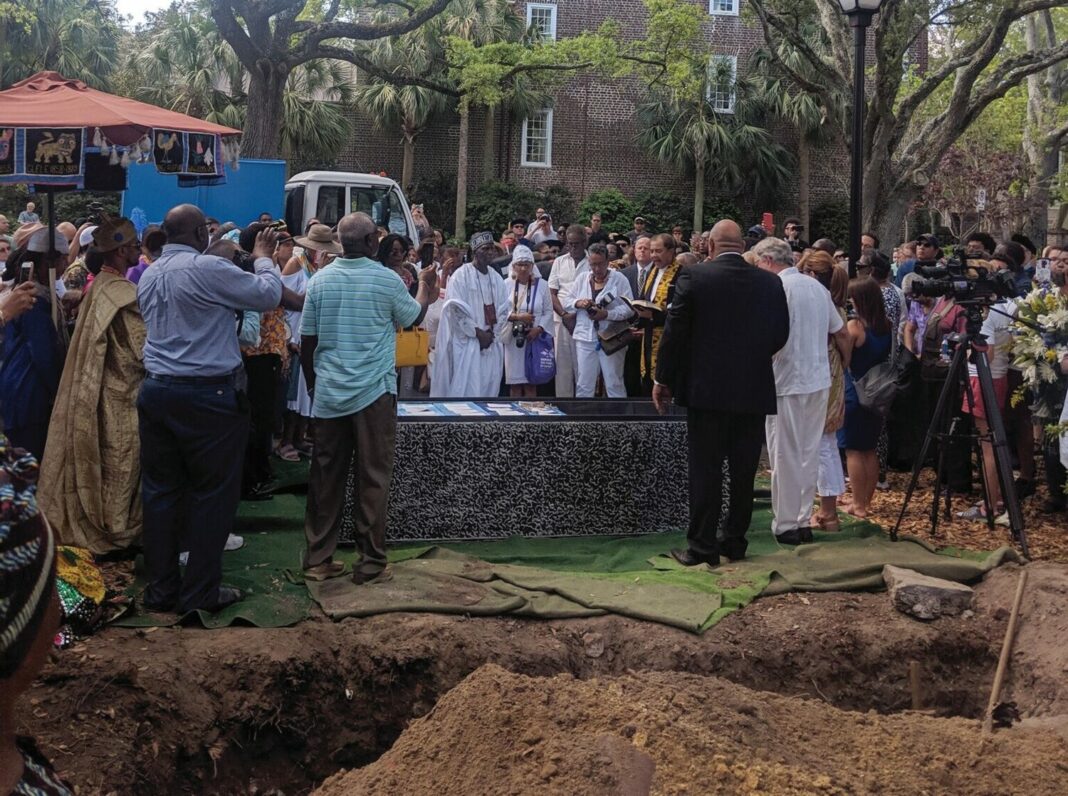The Significance of African Burial Grounds: Remembering and Honoring the Forgotten
Uncovering History in Charleston
In 2013, construction efforts in downtown Charleston, South Carolina, unearthed the remains of 36 individuals of African descent, entwining the city’s modern narrative with its tragic colonial past. These remains, hidden for over 200 years, were part of an unmarked 18th-century burial ground, illuminating the historical erasure of African burial sites—a grim reality that many regions in the former slave states have grappled with for centuries.
The stories of these burial grounds are often overshadowed, paved over by modern developments like parking lots and highways, or left neglected and forgotten. Yet, in recent years, a resurgence of interest and activism has emerged. Communities in places like Bethesda, Maryland, Richmond, Virginia, and St. Petersburg, Florida have started to reclaim these obscured narratives, demanding recognition and respect for their ancestors’ resting places.
The Role of Community in Archaeology
As a public archaeologist, I’ve spent over a decade working in Charleston, co-directing the Anson Street African Burial Ground project. This community-led initiative seeks to honor the 36 ancestors whose remains were uncovered, reflecting a commitment to reclaim and respect African American burial sites as crucial historical memory spaces and rich genealogical resources.
Yet, public understanding of these sites often remains limited. Engaging with these sacred spaces doesn’t merely pay homage to the past; it allows for collective healing, reconciliation, and a deeper cross-cultural understanding.
A Historical Snapshot: The Erasure of Sacred Spaces
Historically, from the British colonial era onward, systemic racism precluded individuals of African descent, both free and enslaved, from utilizing white burial grounds. Instead, enslaved people had their burial practices dictated by their captors, often using makeshift markers that held cultural significance but were largely disregarded by a society that viewed their lives as disposable.
Even as African American communities established their own burial grounds through churches and benevolent societies beginning as early as the 1770s, many sites disappeared from historical records, either due to neglect or malicious oversight. Over time, particularly following the Great Migration, many of these cemeteries fell into disrepair, becoming labeled as “abandoned” and increasingly threatened by modern development and gentrification.
The Gullah Geechee Perspective
The Gullah Geechee community, descendants of enslaved Africans in the southeastern U.S., assert that these burial sites have never been abandoned; rather, they are spaces still imbued with ancestral presence. This worldview posits a connection between the living and the dead, suggesting that proper burials and remembrance are cultural imperatives vital for maintaining community well-being.
West African spiritual traditions, carried over to the Southern U.S., frame death not as an end but as a spiritual homecoming. This profound understanding of mortality fosters a commitment to remembering the deceased—transforming burial into an act of love and dignity.
Modern Recognition and Reform
It wasn’t until the early 1990s, spurred by legislative changes like the Native American Graves Protection and Repatriation Act, that broader recognition of rights over ancestral remains began to materialize. African American communities increasingly asserted their claims to respectful treatment and remembrance of their ancestors, highlighted by the New York African Burial Ground project in 1991.
This pivotal moment in history illustrated the power of community advocacy in reshaping public memory and archaeological ethics. The successful integration of community voices in memorialization efforts serves as a template for future endeavors across the U.S.
The Anson Street Project: A Community-Centered Approach
The Anson Street African Burial Ground project represents a unique approach, intertwining community participation with scientific inquiry. Launched in 2017 as a community-led initiative, the project focused on listening—convening gatherings to discuss the identities of the ancestors, the hopes for reburial, and the process of restoring dignity to those long forgotten.
By combining scientific research on ancestry and health with spiritual guidance and ceremonial practices, the project transcended mere archaeological work, evolving into a communal act of repair, remembrance, and reconciliation.
Rituals of Healing: Naming and Reinterment
A significant milestone occurred in April 2019 when the ancestors were formally named in a ceremony led by Natalie Washington-Weik, a Yorùbá-Orisa Ọ̀ṣun priestess. This act was described as pivotal in reclaiming the humanity and identities of those who had suffered dehumanization.
The subsequent reinterment ceremony became a collective ritual of remembrance and healing, fostering pride and a sense of closure amongst community members. The project continues to evolve, with plans for a permanent memorial at the Anson Street site, featuring a basin of sacred soil and bronze hands symbolizing prayer and resistance, linking ancestral past to contemporary community.
The Aftermath: Reflection and Meaning
Participants in the Anson Street project reflect on their experiences with a complex tapestry of emotions—pride, reverence, sadness, and joy. This collective engagement encourages a broader understanding of memorialization as not merely preserving history, but as an act of recognition and respect, facilitating pathways to healing.
Charleston’s efforts show that remembering and honoring the lives of African-descended peoples is critical to confronting and reconciling with historical injustices. These projects hold immense potential to foster recognition, respect, and healing not just locally, but across communities nationwide, urging us all to confront the narratives long denied to those who came before us.



